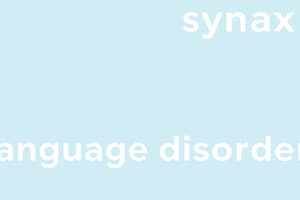Podcast
Questions and Answers
Which of the following best describes the primary focus when characterizing Language Disorder (LD)?
Which of the following best describes the primary focus when characterizing Language Disorder (LD)?
- Identifying the specific genetic mutations causing the disorder.
- Determining the socioeconomic background most commonly associated with LD.
- Pinpointing the exact neurological differences in affected individuals.
- Describing language behaviors that increase the risk of negative outcomes. (correct)
A child with DLD also presents symptoms of ADHD. How would this be categorized within the classification of language disorders?
A child with DLD also presents symptoms of ADHD. How would this be categorized within the classification of language disorders?
- An acquired language disorder.
- DLD co-occurring with an existing condition. (correct)
- DLD occurring as an isolated language impairment.
- LD associated with a biomedical condition.
Which factor does not significantly contribute to disparities in service delivery for children with DLD?
Which factor does not significantly contribute to disparities in service delivery for children with DLD?
- Lack of standardized assessment tools for identifying DLD in diverse populations.
- Socioeconomic barriers hindering access to specialized interventions.
- Limited awareness and understanding of DLD among educators.
- The consistent application of research-backed interventions across all settings. (correct)
A researcher is investigating potential risk factors for DLD. Which area of investigation would be most relevant, considering the multifactorial nature of the disorder?
A researcher is investigating potential risk factors for DLD. Which area of investigation would be most relevant, considering the multifactorial nature of the disorder?
Which of the following language characteristics is commonly observed in the language profile of children with DLD?
Which of the following language characteristics is commonly observed in the language profile of children with DLD?
Flashcards
Language Disorder (LD)
Language Disorder (LD)
A communication disorder that affects an individual's ability to understand or use language.
Developmental Language Disorder (DLD)
Developmental Language Disorder (DLD)
A language disorder that affects a child's ability to acquire language skills, with a prevalence of 7%.
Factors for DLD Service Disparities
Factors for DLD Service Disparities
Various elements that contribute to unequal access to services for children with DLD.
Characterization of LD
Characterization of LD
Signup and view all the flashcards
Etiology of DLD
Etiology of DLD
Signup and view all the flashcards
Study Notes
Language Disorders (LDs)
- LDs encompass expressive, receptive, and combined language impairments across all modalities (written, spoken, reading, sign).
- Language involves form (phonology, morphology, syntax), content (semantics), and function (social pragmatics, discourse).
- Specific Language Impairment (SLI)
- DLD (Developmental Language Disorder) is a persistent language difficulty impacting daily life.
- It's a broad term encompassing diverse disorders.
- Can present with an existing condition, but the existing condition is not necessarily the language disorder itself.
- Characterized by impairments across all aspects of language (form, content, function).
- Often, origin is unknown
- DLD is a primary disorder (significant impact on life and education)
- Approximately 7% prevalence
- Commonly persists into adulthood
- Underrecognized, high incidence, high impact, low awareness
DLD Co-occurring with an Existing Condition
- The existing condition does not include a language disorder itself but may impact language performance.
- Examples include ADHD, specific learning disability (SLD), and motor disorders
DLD Associated with a Biomedical Condition
- LDs may arise from a clear genetic, neurobiological or environmental etiology, or a combination thereof.
- Differing prognosis from DLD
- Requires distinct intervention strategies
Psychosocial Adjustment
- Children with DLD face psychosocial challenges stemming from their language difficulties.
- Increased risk of emotional difficulties, anxiety, and depression.
- Challenges in initiating and maintaining peer relationships.
- Negative self-perceptions of academic, social, and behavioral competence.
- Increased risk of bullying and aggressive behaviours.
Developmental Course of DLD
- Trajectories of late-talking 2-year-olds
- Differences in language development between 2 & 4 year olds
DLD Language Profile
- Heterogeneous population; no single profile
- Features may change over time
Statistical Learning Deficit
- Children with DLD may demonstrate a deficit in learning from statistical patterns in language.
- Executive function deficits may also be present
- Difficulty processing complex sentences.
- Difficulties in language and language learning tasks
Impact of Early Language Experiences
- Quality and quantity of early language experience may impact DLD development.
- Environmental factors, including ACEs, can influence and/or be influenced by gene expression in relation to language impairment
Cognitive Factors
- Reduced auditory memory capacity
- Inefficient auditory processing
- Deficits in perceptual, processing, memory, and learning aspects of cognitive functions contribute to DLD
- Difficulty with metalinguistic tasks
- Lower vocabulary levels and struggles with words.
- Difficulty with understanding speech tempo.
Studying That Suits You
Use AI to generate personalized quizzes and flashcards to suit your learning preferences.




